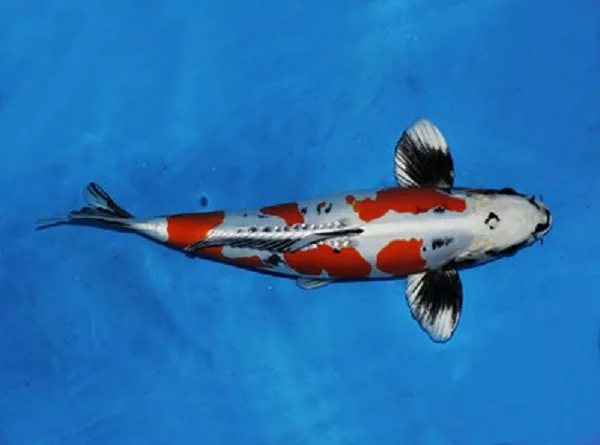
Exploring the Enigmatic Beauty of Kikokuryu Koi ????????????
Introduction
In the tranquil world of koi enthusiasts, where ponds reflect the sky’s serene hues and water ripples gently with the graceful movements of majestic fish, one breed stands out for its enigmatic beauty and captivating presence: the Kikokuryu Koi. Originating from Japan, these exquisite creatures have captivated the hearts of koi enthusiasts worldwide, embodying elegance, grace, and a touch of mystique. In this comprehensive exploration, we delve deep into the essence of Kikokuryu Koi, unraveling their fascinating history, dissecting their intricate characteristics, exploring their diverse varieties, delving into their availability, discussing their care requirements, unraveling their symbolic significance, and more.
Definition and Origin
Kikokuryu Koi, a testament to the artistry of koi breeding, represent a harmonious blend of traditional Japanese techniques and modern innovations. The name “Kikokuryu” itself holds significance, with “Ki” meaning yellow, “Koku” signifying black, and “Ryu” translating to dragon, reflecting the striking coloration and mythical aura of these magnificent fish.
The origins of Kikokuryu Koi can be traced back to Japan, where skilled breeders sought to create a breed that embodied both the timeless elegance of traditional koi varieties and the mesmerizing allure of contemporary metallic koi. The breeding process involved crossing metallic koi varieties, such as the shimmering Ogon, with the enigmatic Kumonryu, renowned for its ever-changing patterns reminiscent of swirling clouds.
The result of this intricate breeding process was the birth of Kikokuryu Koi, characterized by their mesmerizing color variations, intricate patterns, and ethereal beauty. With their origins deeply rooted in Japanese culture and tradition, Kikokuryu Koi serve as a living testament to the rich heritage and artistic craftsmanship of koi breeding in Japan.
Characteristics
Appearance:
At the heart of the allure of Kikokuryu Koi lies their captivating appearance, which mesmerizes onlookers and captivates the imagination. These magnificent creatures boast a diverse range of color variations, including shades of yellow, blue, platinum, and black. Their vibrant hues and contrasting tones create a visual symphony that evokes a sense of awe and wonder.
One of the defining features of Kikokuryu Koi is their intricate body patterns, which are characterized by bold markings and striking contrasts. From delicate scales that shimmer like precious jewels to bold patches of color that dance across their sleek bodies, every aspect of their appearance is a testament to the meticulous artistry of nature.
Varieties:
Kikokuryu Koi are further classified into several distinct varieties, each with its own unique charm and allure:
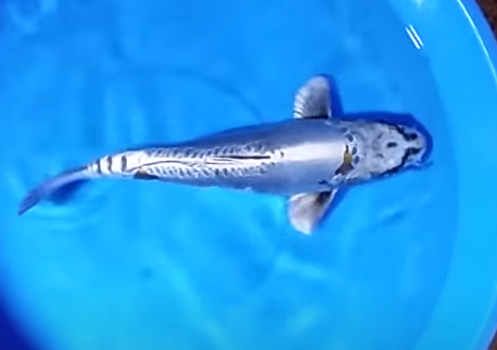
- Kin Kikokuryu: Radiating a golden shimmer reminiscent of the sun’s embrace, Kin Kikokuryu Koi captivate with their luminous beauty and vibrant coloration. Their golden scales glimmer in the sunlight, casting a warm glow that mesmerizes onlookers.
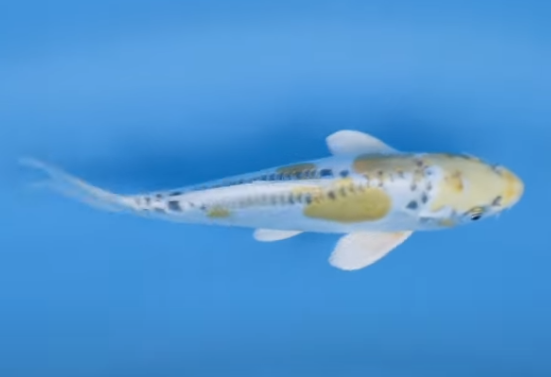
- Ki Kikokuryu: Exuding a serene elegance with hues of green and gold, Ki Kikokuryu Koi evoke a sense of tranquility and harmony. Their verdant scales glisten like emeralds in the water, reflecting the natural beauty of their surroundings.
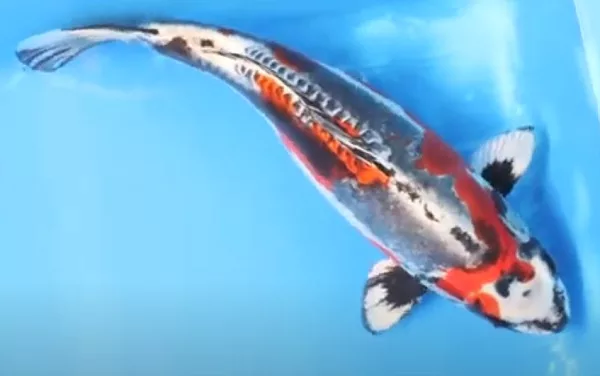
- Beni Kikokuryu: Embellished with striking red accents against a backdrop of darkness, Beni Kikokuryu Koi exude passion and vitality. Their crimson scales stand out in stark contrast to their black bodies, creating a dramatic and captivating appearance.
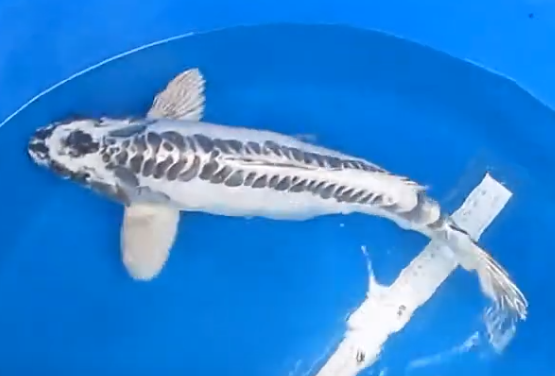
- Blue Kikokuryu: Captivating with hues of azure and cobalt, Blue Kikokuryu Koi evoke a sense of calm and serenity. Their tranquil coloration is reminiscent of the vast expanse of the ocean, inviting viewers to immerse themselves in the beauty of their aquatic world.
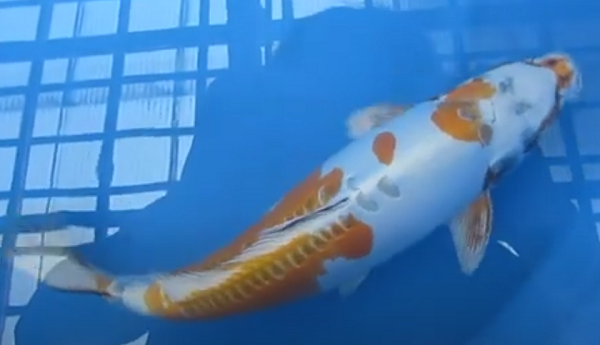
- Yellow Kikokuryu: Radiant and vibrant, Yellow Kikokuryu Koi symbolize warmth and vitality. Their sunny disposition and cheerful coloration brighten any pond, spreading joy and happiness to all who behold their radiant beauty.
Buying and Selling
The availability of Kikokuryu Koi varies depending on geographical location and the presence of reputable koi breeders and sellers. In regions with a thriving koi community, such as Japan, the United States, the United Kingdom, and the Philippines, Kikokuryu Koi are often readily available through specialized koi dealers, breeders, and online marketplaces.
When purchasing Kikokuryu Koi, it is essential to exercise caution and diligence to ensure the authenticity and quality of the fish. Reputable sellers prioritize the health and well-being of their koi and provide customers with detailed information about the fish’s lineage, health history, and care requirements. Additionally, buyers should inspect the fish in person whenever possible, paying close attention to factors such as body condition, coloration, and overall appearance.
Care and Maintenance
Proper care and maintenance are essential for the health and well-being of Kikokuryu Koi, ensuring that they thrive and flourish in their aquatic environment. Key aspects of their care regimen include:
Water Quality: Maintaining optimal water quality is paramount for the health of Kikokuryu Koi. Regular water testing and monitoring help ensure that parameters such as pH, ammonia, nitrite, and nitrate levels remain within the recommended range for koi.
Pond Setup: Providing a suitable pond setup is essential for the comfort and well-being of Kikokuryu Koi. Ideally, ponds should be spacious, well-aerated, and equipped with filtration systems to ensure adequate oxygenation and water circulation. Additionally, providing ample vegetation, hiding places, and natural substrate enhances the koi’s habitat and enriches their environment.
Compatibility: When introducing Kikokuryu Koi to a pond, it is essential to consider their compatibility with other fish species. Koi are generally peaceful and social creatures, but compatibility issues can arise with certain species, such as aggressive or predatory fish. Introducing new fish gradually and monitoring their interactions helps minimize stress and promote harmonious cohabitation in the pond.
Health Monitoring: Regular health monitoring is crucial for detecting and addressing any potential issues or illnesses affecting Kikokuryu Koi. Common health problems in koi include parasites, bacterial infections, and fungal diseases. Monitoring for signs of illness, such as changes in behavior, appetite, or appearance, enables koi enthusiasts to take prompt action and provide appropriate treatment when necessary.
Symbolism and Cultural Significance
In addition to their breathtaking beauty and captivating presence, Kikokuryu Koi hold deep symbolic significance in various cultures and traditions around the world. From ancient myths and legends to modern-day interpretations, the symbolism of koi resonates with people across different cultures, embodying themes of perseverance, transformation, abundance, and prosperity.
In Japanese culture, koi are revered as symbols of perseverance and strength, derived from the legend of the koi fish that swam upstream to become a dragon. This ancient tale represents the journey of overcoming adversity and achieving greatness through determination and resilience, making koi a popular motif in Japanese art, literature, and folklore.
In Chinese culture, koi are associated with prosperity, good fortune, and success. The Chinese word for koi, “yú,” sounds similar to the word for abundance and wealth, making koi a popular symbol of prosperity and abundance in Chinese art and culture. In Feng Shui, the presence of koi is believed to bring positive energy and attract wealth and prosperity to the home or business.
In Western cultures, koi are admired for their beauty and grace, with their vibrant colors and graceful movements captivating the imagination of artists, poets, and storytellers. In Christianity, koi are sometimes associated with themes of transformation and rebirth, symbolizing spiritual growth and renewal.
Conclusion
In conclusion, Kikokuryu Koi stand as a testament to the timeless allure and enchanting beauty of the koi fish world. From their mesmerizing colors and intricate patterns to their deep symbolic significance and cultural resonance, Kikokuryu Koi embody the essence of grace, elegance, and mystique. As prized treasures in the realm of koi keeping, they inspire awe and admiration, leaving an indelible mark on the hearts of all who encounter their enchanting presence. Whether admired for their aesthetic beauty, revered for their symbolic significance, or cherished for their companionship, Kikokuryu Koi continue to enchant and captivate enthusiasts worldwide, perpetuating their legacy as beloved ambassadors of the aquatic world. ????????????
Frequently Asked Questions (FAQs)
What is a Kikokuryu Koi?
A Kikokuryu Koi is a unique and captivating breed of koi fish known for its striking color variations and intricate patterns. Originating from Japan, Kikokuryu Koi are the result of crossbreeding metallic koi varieties with the enigmatic Kumonryu. They exhibit a diverse range of colors, including shades of yellow, blue, platinum, and black, and are characterized by their vibrant hues and contrasting tones.
How do you identify Kikokuryu Koi?
Identifying Kikokuryu Koi requires attention to their distinct coloration and markings. These koi typically have a combination of metallic and non-metallic scales, with vibrant colors such as yellow, blue, platinum, and black. Their body patterns often feature bold patches of color against a dark background, creating a visually stunning appearance. Additionally, Kikokuryu Koi may exhibit butterfly koi traits, such as long flowing fins, further enhancing their unique identity.
What is the difference between Kumonryu and Kikokuryu?
While both Kumonryu and Kikokuryu are captivating breeds of koi fish, they have distinct characteristics that set them apart. Kumonryu Koi are known for their dynamic color changes, with patterns resembling swirling clouds against a dark background. These changes can range from bold black markings to delicate gray or white patterns, creating a mesmerizing effect. In contrast, Kikokuryu Koi exhibit more stable coloration, with vibrant hues of yellow, blue, platinum, and black. While both breeds share similarities in their origin and lineage, their distinct color patterns and markings make them easily distinguishable.
What is Kumonryu Koi?
Kumonryu Koi, also known as “Dragon Fish,” are a captivating breed of koi fish originating from Japan. Renowned for their dynamic color changes, Kumonryu Koi exhibit patterns that resemble swirling clouds against a dark background. These changes can range from bold black markings to delicate gray or white patterns, creating a mesmerizing and ever-changing appearance. With their enigmatic beauty and mythical aura, Kumonryu Koi continue to captivate koi enthusiasts worldwide, earning a special place in the realm of koi keeping.
You may also like
- https://www.giobelkoicenter.com/koi-fish-meaning/
- https://www.giobelkoicenter.com/most-expensive-koi-fish/
- https://www.giobelkoicenter.com/matsuba-koi/
- https://www.giobelkoicenter.com/koi-egg-bound/
- https://www.giobelkoicenter.com/metronidazole-for-fish/
